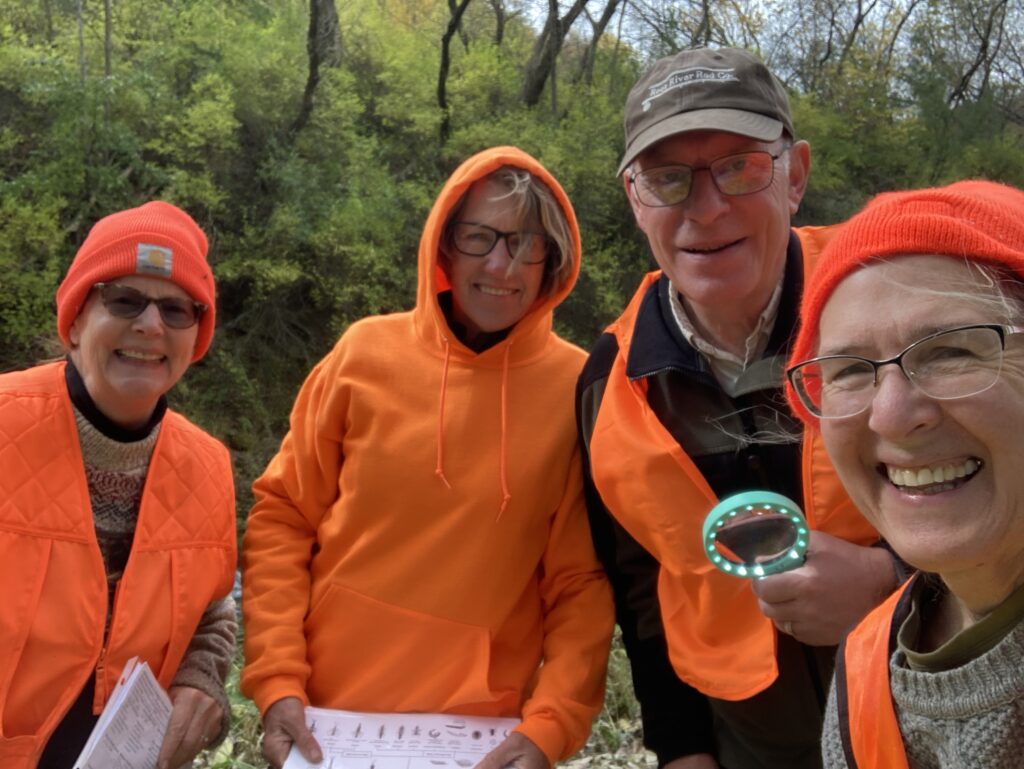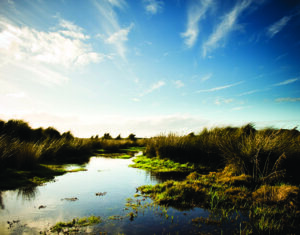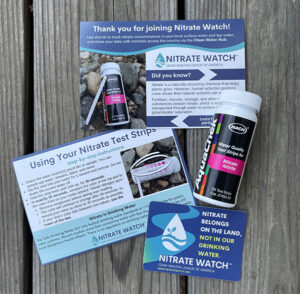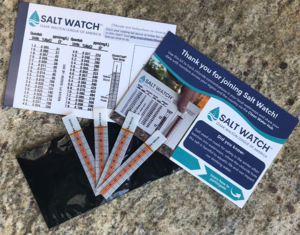Meet a Monitor: Caroline van Schaik

Caroline van Schaik is a Save Our Streams volunteer and a force for clean water in southeast Minnesota. For over 5 years, Caroline has organized a group of fellow water monitors through the Will Dilg Chapter of the Izaak Walton League in Winona County, MN. The group of roughly a dozen team members monitor 6 sites across 3 counties in southeast Minnesota. One of Caroline’s water monitoring teammates nominated her to be featured in Meet a Monitor, saying “If you are looking for someone who inspires and diligently supports SOS programs, she is your woman.”
If you’d like to nominate yourself or someone you know to be featured in a future Meet a Monitor installment, reach out to the Save Our Streams team at sos@iwla.org.
Read on to view Caroline’s responses to our “Meet a Monitor” interview questions.
What drew you to water quality monitoring?
I came to stream monitoring through the land, as a farmer and as an organizer for sustainable farmers and landowners who prioritize soil, water, and habitat as well as good food and feed. Local conservation chapters, including the Ikes, were good partners in pasture-streamside field events, and when I took a position with the Minnesota Division of the Izaak Walton League, the SOS program was a natural fit. Drinking water, land management, swimmable streams, fish to fry… if ever there were a single way to engage a broad swath of people in the health of our abundant Driftless Region streams and rivers, monitoring is it!
How did you find out about the Izaak Walton League’s water monitoring programs?
Citizen science has good traction in Minnesota and that includes the Ike’s various programs. We – our small but persistent group – avail ourselves of many opportunities to help others know about this hands-on opportunity to understand local waters and our impacts on them.
Why have you continued monitoring? What do you enjoy about monitoring?
When I send out the “It’s SOS time!” email to folks, it’s code for comradery, for unveiling the health of our sites compared to past seasons and years, for talking fish and farming, for catching up with each other, for coffee afterwards. “Together,” is probably the singular operative word by which we keep eyes on our streams and then talk about what we find in straight forward language to the public. I revel in this process of taking care of the water and each other along the way. SOS works on both levels and many others, too, and that is its great strength.
Have you ever shared your monitoring data with others or used it to advocate for clean water protection?
My work with the Minnesota Division included a project website where I published regular images from the Clean Water Hub and our volunteers in action. We take some of those images to farmers markets and other public avenues as talking points, especially in urban areas where street salt is a familiar issue. But fishing is, too, so species diversity is a strong topic and our data help us tell that story for better or worse. It’s worth noting, too, that in larger water arenas, being a stream monitor carries weight with or without data at hand.
Are there any other ways you are working to protect the waterways that you monitor?
Most of us are rural well users in a region plagued with contaminated aquifers. Because of the porous nature of a limestone-defined topography known as karst, our surface and ground waters are the same, and as such, drinking water, fish, habitat, and macroinvertebrate populations are all challenged. For example, we noticed during this past spring monitoring that macros were both smaller in size and poorer in diversity. We talked about this then and continue to note it at every opportunity, including through my voluntary work to change feedlot rules and related farming practices.
Is there anything else you’d like to add?
People – all of us – come to an issue for many reasons. The trick is to create lots of paths to help people pay attention. Monitoring creates a myriad of important contributions, whether we are drawing macroinvertebrates for school, notetaking on land, wading in with the thermometer, entering the data, or raising our heads to think about the larger issues at work – of confinement livestock, road salt, or refuge preservation, to name a few that are relevant in our Driftless Region. Any way to get people streamside together is a success for humanity, even if it looks like it’s “just” for the fish!
Are there any ways you’ve seen water quality monitoring make a difference in your community?
Some of us only see each other streamside. Some of us have become friends whose lives now overlap in delightful fashion. One of us is shy and only comes when it’s a small group but nods when we cross paths elsewhere. There are more of us now. We have made fish-shaped cakes, told disgusting planaria stories, shared many cups of coffee, bought chickens together, and we keep showing up to keep “water” in front of the public. This is the way to make a difference even when we won’t see it until we look back.
An article from the Root River Current (published Jan 21, 2025) highlights the monitoring work of Caroline and her team of SOS volunteers. Check it out!

 Your kit will include a bottle containing 25 nitrate test strips which you can use to test your water source(s) throughout the year. You’ll also receive postcards explaining how to use your nitrate test strips and how to share your Nitrate Watch results on the Clean Water Hub.
Your kit will include a bottle containing 25 nitrate test strips which you can use to test your water source(s) throughout the year. You’ll also receive postcards explaining how to use your nitrate test strips and how to share your Nitrate Watch results on the Clean Water Hub. Your kit will include four test strips so you can test your waterway throughout the season. You’ll also receive a chart to help you interpret your results and a postcard with instructions for completing a Salt Watch test and reporting your findings.
Your kit will include four test strips so you can test your waterway throughout the season. You’ll also receive a chart to help you interpret your results and a postcard with instructions for completing a Salt Watch test and reporting your findings.